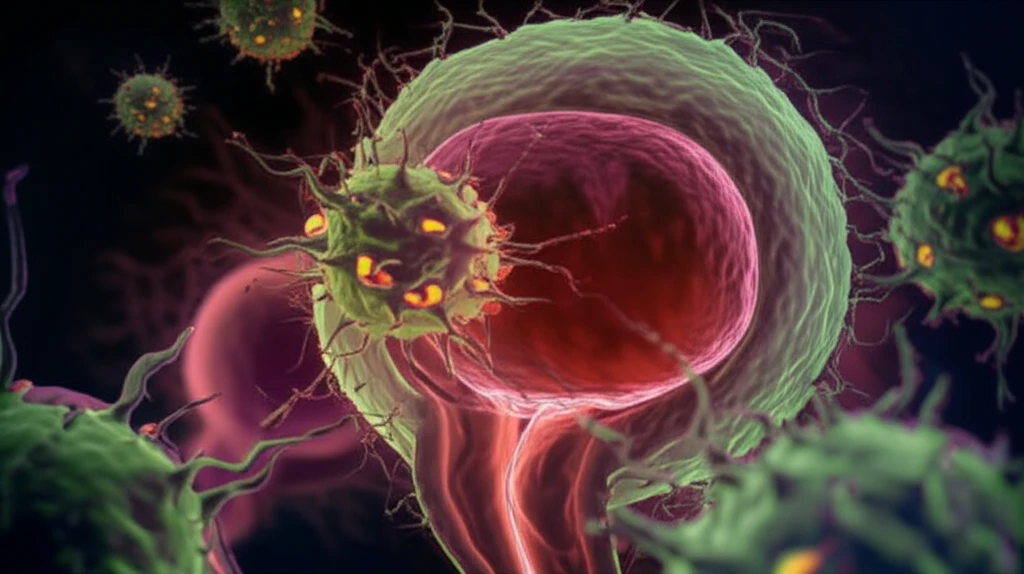
Bladder Cancer's Silent Threat: A Guide to Small Cell Carcinoma
"Unraveling the complexities of a rare and aggressive form of bladder cancer, its diagnosis, and the latest treatment approaches."
Neuroendocrine tumors (NETs) are a diverse group arising from neuroendocrine cells throughout the body. While NETs can occur in various organs, including the lungs and gastrointestinal tract, their presence in the urinary system is relatively uncommon. This article focuses specifically on small cell carcinoma (SmCC) of the bladder, a rare and aggressive subtype of NET.
SmCC of the bladder shares histological similarities with SmCC found in other organs, particularly the lung. However, bladder SmCC often presents unique diagnostic and therapeutic challenges. Distinguishing it from more common urothelial carcinomas is crucial for appropriate management.
This article examines the clinical properties, diagnostic approaches, histopathological features, immunohistochemical characteristics, and treatment modalities for small cell bladder carcinoma, providing a comprehensive overview of this rare and frequently fatal disease.
Decoding the Diagnosis: How to Spot Small Cell Bladder Carcinoma

Diagnosing small cell bladder carcinoma involves a combination of cystoscopy, microscopic evaluation of tissue samples obtained through transurethral resection of bladder tumor (TUR-BT), and immunohistochemical staining. Macroscopically, the tumor may appear as a polypoid mass, ranging in size from 1.5 to 13 cm.
- Cystoscopy and TUR-BT: Visual examination and tissue sampling for initial assessment.
- Microscopic Evaluation: Identifies key cellular characteristics of SmCC.
- Immunohistochemical Staining: Confirms diagnosis and differentiates SmCC from other carcinomas.
The Future of Bladder Cancer Treatment: A Call for Research
Bladder small cell carcinoma remains a formidable challenge due to its aggressive nature and tendency for late-stage diagnosis. Accurate diagnosis relies on careful microscopic examination and immunohistochemical analysis.
Given the rarity of this cancer, treatment strategies are often based on multimodal approaches, including surgery, chemotherapy, and radiation therapy. Further research is needed to optimize treatment protocols and improve long-term outcomes.
Ultimately, unraveling the molecular pathogenesis of bladder SmCC and conducting well-designed clinical trials are essential for advancing diagnostic and therapeutic strategies, offering hope for improved outcomes in this challenging disease.
